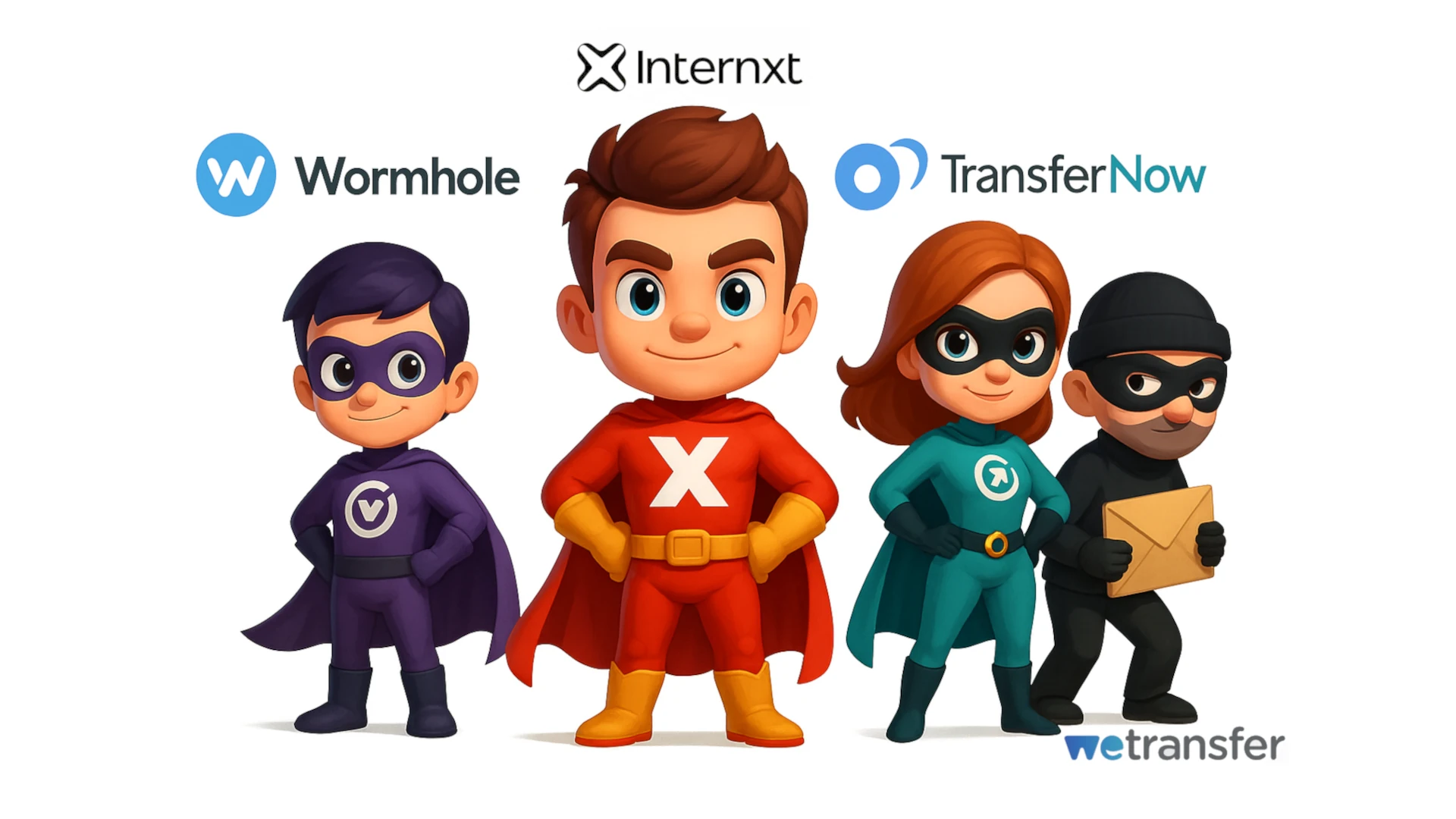
Free Services to Send Large Files with Maximum Privacy
Free Services to Send Large Files with Maximum Privacy
This analysis compares four free file‑sharing services with the goal of finding the safest and most privacy–respecting option.
Five main criteria were considered:
- Encryption model – priority for end‑to‑end, zero‑knowledge encryption.
- Technical transparency – open‑source code or third‑party audits.
- User controls – password protection, self‑destruction, configurable expiry.
- Free‑tier limits – maximum file size and link lifetime.
- Track record & jurisdiction – past security incidents and data‑protection laws.
Quick comparison
| Service | E2EE / Zero‑knowledge | Open Source | Free limit | Expiry | Key extras | Recommendation |
|---|---|---|---|---|---|---|
| Internxt Send | Yes (XChaCha20) | Yes | 5 GB | 15 days | Optional password, GDPR (EU) | ★★★ |
| Wormhole | Yes (AES‑GCM) | Partial | 10 GB | 24 h | P2P ≥ 5 GB, no trackers | ★★★ |
| TransferNow | Partial (AES‑256 at rest) | No | 5 GB | 7 days | Password, download stats | ★★ |
| WeTransfer | No (TLS + AES at rest) | No | 3 GB | 3 days | ISO‑27001, slick UX | — |
Conclusion
After evaluating all criteria, Internxt Send offers the best balance of strict privacy and usability:
- It delivers zero‑knowledge end‑to‑end encryption, ensuring that even the provider cannot decrypt your files.
- The codebase is open and publicly audited, allowing community verification.
- Links remain active for 15 days, more than twice as long as any other free option analysed.
- Servers are located in the European Union and the company is fully GDPR‑compliant, giving stronger legal safeguards.
If a transfer exceeds the 5 GB cap or needs to disappear within 24 hours, Wormhole is the next best candidate, matching the top rating thanks to its P2P architecture and comparable E2EE guarantees.
TransferNow and WeTransfer remain convenient for non‑sensitive content or collaborative workflows where convenience trumps confidentiality, but the absence (or partial nature) of end‑to‑end encryption makes them less suitable for highly sensitive data.





Comentarios